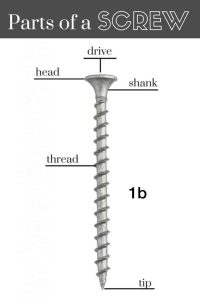
1a
i.Machine
ii.Sheet Metal
iii. Cap Screws
1b.
Diagram below
3b
Pick any four
Traditional materials
i. 2.1 Mud.
ii. 2.2 Timber.
iii. 2.3 Straw.
iv. 2.4 Stone.
v. 2.5 Clay (bricks)
vi. 2.6 Slate.
vii. 2.7 Lead.
5a)
1. Durability is the first priority for any kind of engineering material. A good timber should be durable enough to resist the actions of chemical agents, biological agents, physical agencies, etc.
2. Strength: Strength is the resistance against failure. A good timber should not fail easily and it should be strong enough to take loads acting on it. The strength of timber varies depending on the direction (transverse or direct) it is loaded. Strength is considered as an important property while designing structural wood members such as wooden beams, joists, rafters, etc.
3. Permeability; The permeability of timber should be less. A good timber should not absorb more than 8 to 12% of water by its weight when placed in water. The water permeability of timber depends upon various factors such as moisture content of timber, age of timber, type of timber, type of cut, etc.
4. Hardness; Hardness is the resistance against penetration. Good timber should be hard and workable. The hardness of timber depends upon its density and heartwood properties. Stronger is the heartwood higher is the hardness of timber.
5b
Pick any four
i. Cabinet Finishes
ii. Cabinet Oils.
iii. Cabinet Stains.
iv.Cabinet Varnishes.
v. Cabinet Paints.

Leave a Reply